✨You Can Touch the Times Square New Year's Eve Ball!
Find out how you can take home a piece of the old New Year's Eve ball!


With the reopening of the High Bridge last week as a pedestrian link across the Harlem River, visitors enjoyed vistas that have been off-limits for over 40 years. Views toward Manhattan are dominated by the nearby High Bridge Water Tower, which rises above the bridge on one of the highest points in Manhattan, 200 feet above sea level. Which raises two questions: why is there a stone tower in the middle of Manhattan’s Highbridge Park and why is it closed to the public?
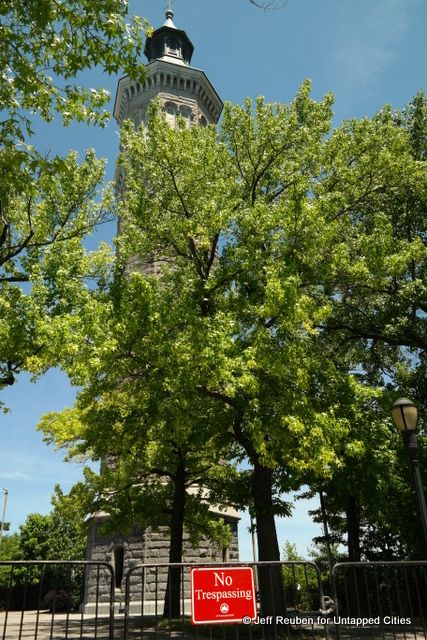
High Bridge Water Tower is not publicly-accessible
Unlike the High Bridge, which for decades was a popular public attraction, the High Bridge Water Tower’s importance in the public imagination has been as a iconic structure more admired from afar than known intimately. Following the restoration of the High Bridge, the tower is now slated to undergo its own reconstruction.
The approximately 170-foot tall High Bridge Water Tower was completed in 1872, 24 years after its namesake was completed in 1848. Like the High Bridge, the tower was part of the old Croton Water System (the High Bridge functioned as part of the aqueduct conveying potable water from the Croton Reservoir in Westchester County to Manhattan and also served as a pedestrian crossing over the Harlem River). The tower, which was built to provide water pressure for the higher elevations of upper Manhattan, contained a 47,000-gallon water tank and a pumping engine to force water up to the tank.
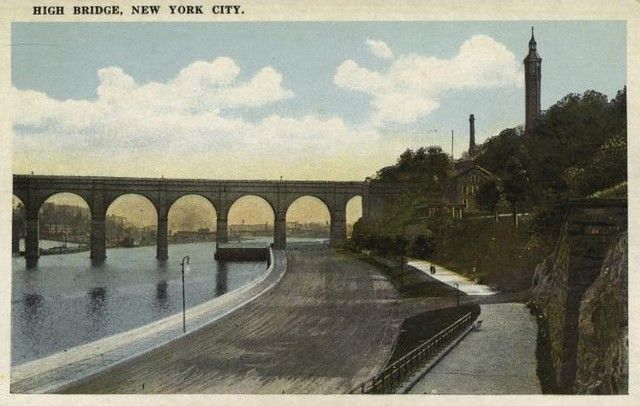
Postcard, 1915. Image via: Art and Picture Collection, The New York Public Library Digital Collections.
As was the case for the High Bridge and many other Croton system structures, although the High Bridge Water Tower was built for a functional purpose, it was designed in a distinctive architectural style and became a local landmark. The New York Herald, in an 1882 article, observed that “the graceful arches of the High Bridge fill the gap between the high hills that rise precipitously from the river, and on the crest of one of these hills the minaret of the High Bridge tower is conspicuous as being unlike anything else in the city.”
The tower ceased to be used for water system purposes in 1949, though for many years prior to that its use had been limited as the City’s water works expanded beyond the old Croton aqueduct.
Perhaps in an effort to re-purpose the tower, an electronic carillon was added in the belfry in 1958. For some time after, the carillon chimed on a regular basis, but it is no longer in use.
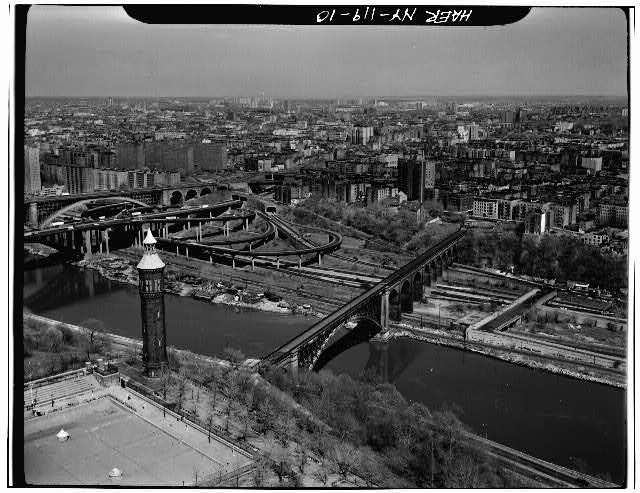
Aerial View Towards the Bronx, 1978. Image via: Library of Congress, Prints & Photographs Online Catalog.
The High Bridge Water Tower has stood mostly unused for decades. Renovations in the late 1980s repaired damage from a 1984 arson fire. For several years, until 2010, the Parks Department periodically provided tours of the tower, allowing a few lucky visitors to walk stairs to the top to gain panoramic views. However, the tower closed five years ago due to needed repairs.
While under utilized, it has not been unappreciated. It is a designated NYC Landmark (1967), an American Water Landmark (1969), and listed on the National Register of Historic Places (1972).
“Since 1872, a slender and graceful water tower overlooking old High Bridge and the Harlem River has been one of Manhattan’s most picturesque architectural monuments. This impressive tower resembling a medieval campanile is a rugged manifestation of the early Romanesque Revival style of architecture.” – NYC Landmarks Preservation Commission, Landmark Designation Report, 1967.
Recently the NYC Department of Parks and Recreation announced that it will undertake a restoration of the High Bridge Water Tower with project completion anticipated in 2016. However, the Parks Department has not yet identified the scope of work to be completed.
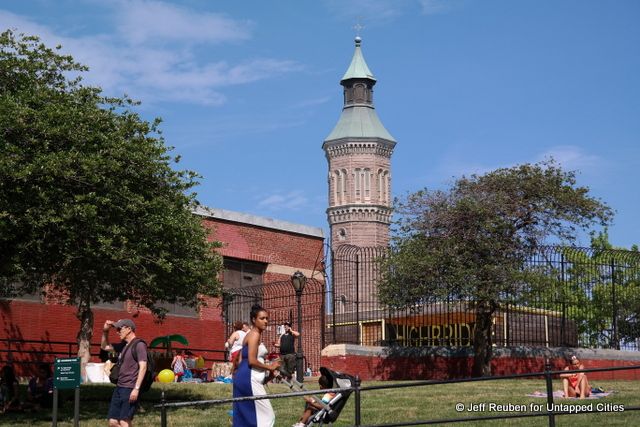
High Bridge Water Tower is located inside Highbridge Park
Now, the next chapter in the history of the High Bridge Water Tower awaits. With public access to the High Bridge restored, resulting in increased visitation to the area and higher visibility for the tower, perhaps soon the public will also have the opportunity to get to see this iconic, if until now aloof, landmark, up close.
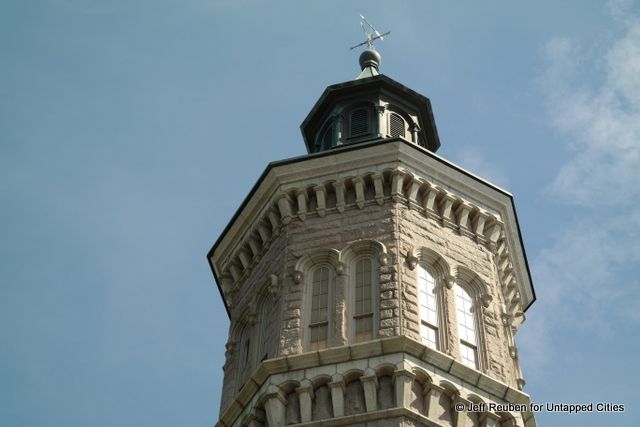
Check out more remnants of the old Croton Aqueduct in New York City.
Subscribe to our newsletter